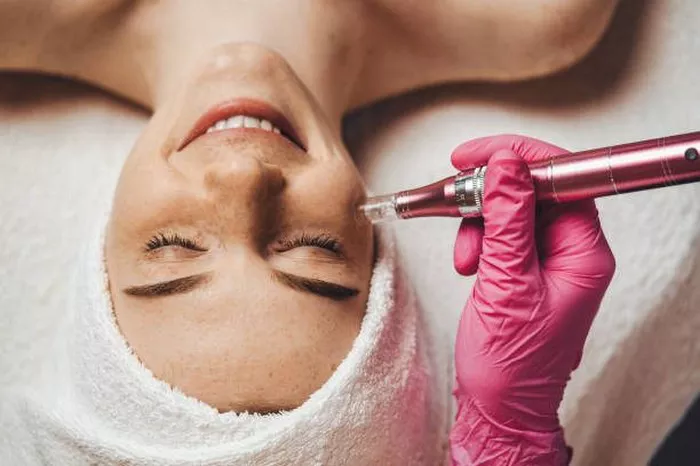Microdermabrasion is a popular exfoliating treatment that can improve the appearance of the skin by removing dead skin cells and revealing a smoother, more radiant complexion. While professional microdermabrasion treatments are available at spas and clinics, many individuals opt to do microdermabrasion at home using handheld devices. However, it is essential to understand the recommended frequency and best practices to ensure safe and effective results. In this article, we will explore how often to do microdermabrasion at home, the benefits of this skincare routine, and key considerations for achieving healthy and glowing skin.
Understanding Microdermabrasion at Home
Microdermabrasion at home involves using handheld devices that mimic the exfoliating effects of professional treatments. These devices typically utilize fine crystals or diamond tips to gently exfoliate the skin’s surface, promoting cell turnover and rejuvenation. By incorporating microdermabrasion into your skincare routine, you can improve skin texture, reduce the appearance of fine lines, and address mild skin imperfections.
Recommended Frequency for Home Microdermabrasion
The frequency of at-home microdermabrasion treatments depends on the individual’s skin type, skin concerns, and the intensity of the device being used. As a general guideline:
For Normal to Dry Skin: Individuals with normal to dry skin can perform microdermabrasion at home once every two to three weeks. This allows sufficient time for the skin to recover and ensures that the exfoliation process does not lead to excessive dryness or irritation.
For Oily or Acne-Prone Skin: Those with oily or acne-prone skin can consider performing microdermabrasion once every one to two weeks. Regular exfoliation can help unclog pores, reduce excess oil production, and improve the overall complexion.
For Sensitive Skin: Individuals with sensitive skin should be cautious when performing at-home microdermabrasion. It is advisable to space out treatments to once every three to four weeks or as recommended by a skincare professional.
Key Considerations for Safe and Effective At-Home Microdermabrasion
Choose the Right Device: Select an at-home microdermabrasion device that suits your skin type and concerns. Read product reviews and consult with a dermatologist if necessary to find a device with adjustable intensity levels and suitable attachments for your skin’s needs.
Start Slowly: If you are new to at-home microdermabrasion, start with a lower intensity level and gradually increase it as your skin becomes more accustomed to the treatment.
Follow Instructions Carefully: Always follow the manufacturer’s instructions and guidelines provided with the microdermabrasion device. Improper use may lead to skin damage or adverse reactions.
Perform a Patch Test: Before using the device on your entire face, perform a patch test on a small area of skin to check for any sensitivity or allergic reactions.
Avoid Sensitive Areas: Avoid using the microdermabrasion device on sensitive areas, such as around the eyes or on open wounds or active acne lesions.
Sun Protection: After microdermabrasion, the skin is more sensitive to the sun. Apply sunscreen with at least SPF 30 daily and limit sun exposure to protect your skin from harmful UV rays.
Hydration: After treatment, apply a gentle moisturizer to soothe and hydrate the skin. Hydration is essential to maintain the skin’s barrier and promote skin healing.
Limit Other Exfoliants: Avoid using other exfoliating products or treatments, such as scrubs or chemical exfoliants, immediately before or after microdermabrasion to prevent over-exfoliation and potential irritation.
Benefits of At-Home Microdermabrasion
Convenient: At-home microdermabrasion offers the convenience of performing the treatment on your schedule without the need for salon appointments.
Cost-Effective: Investing in an at-home microdermabrasion device can be more cost-effective in the long run compared to regular visits to a professional spa or clinic.
Skin Texture Improvement: Regular microdermabrasion treatments can lead to smoother skin texture, reduced appearance of fine lines, and a more even complexion.
Enhanced Product Absorption: By removing the outer layer of dead skin cells, microdermabrasion allows skincare products to penetrate the skin more effectively, maximizing their benefits.
Conclusion
At-home microdermabrasion is an effective and convenient way to exfoliate and rejuvenate the skin. The frequency of treatments should be tailored to your skin type and concerns, with general guidelines ranging from once every two to three weeks for normal to dry skin and once every one to two weeks for oily or acne-prone skin. It is essential to choose the right device, follow instructions carefully, and start slowly to ensure safe and effective results. Incorporating at-home microdermabrasion into your skincare routine can lead to improved skin texture, reduced signs of aging, and a more radiant complexion. However, if you have specific skin concerns or medical conditions, it is advisable to consult with a dermatologist or skincare professional before starting any at-home exfoliating treatments. With proper care and attention, at-home microdermabrasion can be a valuable addition to your skincare regimen, helping you achieve healthy and glowing skin.


